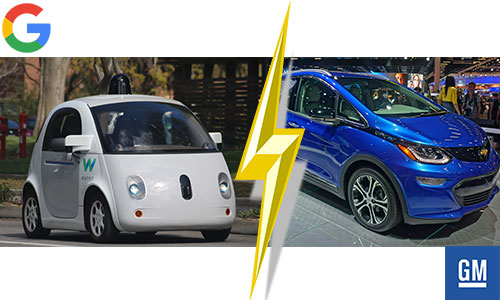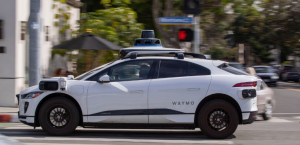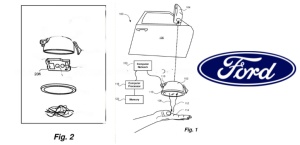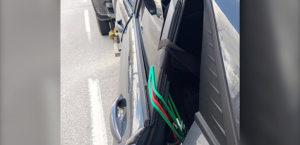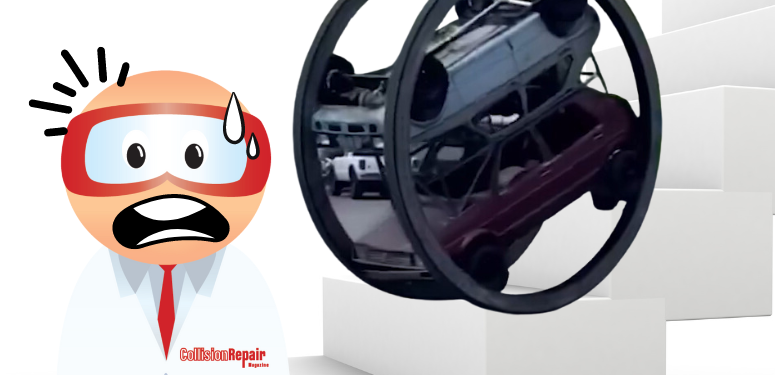By Jeff Sanford
Toronto, Ontario — November 27, 2017 — In this week’s Autonomous Report, General Motors to make big announcement, AV aftermarket service conglomerates, the coming flood of used non-AVs, and much, much more!
-General Motors has scheduled a webcast for investors on November 30. Analysts seem to think a major announcement concerning the company’s AV strategy is in store. Several stories appeared in the financial trade press this past week speculating that the presentation could be a defining event in the history of the company and the auto industry.
According to a report from The Motley Fool, “CEO Mary Barra [has dropped] hints that give a fairly clear picture of how GM will bring autonomous vehicles to market…The big takeaway from everything Barra has said about autonomous vehicles in recent months is this: GM isn’t dabbling. The company plans to make a lot of self-driving vehicles in the near future, and it – perhaps uniquely – will soon have the ability to do so.”
The story goes on to quote Barra as saying, “Electric self-driving cars will save millions of lives, and it significantly accelerates the transition to sustainable entry to the world of zero emissions, but only when they’re deployed at large scale. So our focus working with [GM’s self-driving subsidiary, Cruise Automation] is to make sure we’re positioned to rapidly deploy self-driving cars at scale.” According to the media story, “Barra went on to explain that the key to deploying self-driving cars ‘at scale’ is to have a safe self-driving system, a vehicle that’s well-suited for it, and the ability to manufacture those.
GM has the vehicle. Cruise Automation has designed its self-driving system to be deeply integrated into the Chevrolet Bolt EV, GM’s pioneering long-range electric car.” Apparently the self-driving Bolt, “…differs in significant ways from the ‘regular’ Bolt — Barra said that about 40 percent of the Bolt’s parts are different in the self-driving version – but it can be built on the Bolt’s regular assembly line. That means GM can crank them out by the thousands as soon as its suppliers are ready.” This is key.
Many have assumed that Google would win the race to produce a commercial AV. But in this epic showdown between Detroit and Silicon Valley, it may be that the ability to produce thousands of real steel vehicles may trump the ability to produce sophisticated self-driving software. Google is a fancy company. But it has zero experience in building thousands of units a day of the world’s single largest consumer item, the car.
According to the story, “Barra emphasized that many of the unique parts in the autonomous Bolt are proprietary GM pieces. GM recently acquired a company called Strobe that had developed small, low-cost lidar sensors… GM [also] owns key parts of the autonomous-vehicle supply chain, including the car itself (and the factory that makes it), the self-driving ‘brain’ (developed by Cruise), and the one key sensor that isn’t a commodity, the lidar units. That means that GM can probably start making self-driving vehicles by the thousands as soon as its software is ready.” As the reporter suggests, these are clues as to what GM may be preparing to announce later this week.
Another quote from Barra: “Although our focus is on building the product and having the product because it’s the most complex problem to solve, getting that done first, we are also building a commercialization strategy that will allow us to unlock maximum value… We believe this is an opportunity to participate in the biggest business since the creation of the Internet, and we believe GM is in position to lead this opportunity.” Barra also recently threw some shade on the Google car project. She points out that GM has been testing its cars in San Francisco. Self-driving cars utilized learning-based software. That is, the software builds its capabilities through real-life experience.
According to Barra by ‘training’ its cars in San Francisco, GM has put itself ahead of Google. According to the story, “Barra said that GM is making a point of racking up lots and lots of self-driving test miles in cities, specifically in San Francisco. That’s something that key self-driving rivals like Alphabet’s Waymo unit haven’t really focused on. She said a test vehicle operating in San Francisco ‘learns’ in a minute what it would take an hour to learn in a suburban environment like Scottsdale, Arizona [where Google is testing its cars].”
The GM/Cruise system is said to be at Level 4 automation now. The cars would be limited to areas that have been carefully mapped. And GM is said to have San Francisco, “… well-mapped at this point.” But as the story notes, “… interestingly, Barra noted that GM is working on mapping other cities, and said, ‘It will be six months or less to get ready to launch in other cities’.” As well, Barra has said that GM will begin rolling out its self-driving vehicles in “quarters, not years.” Is GM close to being ready to mass-produce AVs? Some think we might find this out next Thursday.
-The well-known Wall Street shark Carl Icahn had a place in the Trump administration in the early days. He stepped back from the administration early over conflicts of interest. But the legendary buyout artist seems to have turned his attention to another project–making something out of the disparate group of auto repair and supply outfits he has bought up over the past several year. Icahn, of course, has a stake in Lyft, a ride-sharing firm that is a direct competitor to Uber. He also has a controlling stake in the car rental firm Hertz. He owns aftermarket retail brands like American Driveline Systems, Pep Boys and Auto Plus. One of his companies, Federal Mogul Holdings, is a maker of aftermarket parts, including Champion spark plugs and Wagner brakes (which he took privately in January).
He was recently quoted as saying, “If you look at these businesses as single things, I don’t think they’re that great.” But a couple of recent articles in the auto trade press note that these companies could have a place in the new auto industry emerging out of the old one. As the new world of AVs emerges, major auto manufacturers are now referring to themselves as “mobility companies.” If, as many expect, AI-driven, ride-sharing fleets begin operating in urban cores in the years to come, Icahn may be perfectly situated to profit. He was also recently quoted as saying, “There’s a secular change happening, which we see as a great opportunity, and it will be good for Icahn Enterprises.”
According to a recent story on the investing legend, “…in the next two decades or so… Americans will ditch personal cars, opting instead for communal rideshares or short-term rentals… This shift will be a boon for Icahn’s various companies, in which he sees the migration playing into his hands.” According to the story, “… since those companies have zero interest in taking care of fleets, the 1,900 service centers Icahn Automotive Group LLC owns would stay busy…Hertz is restructuring its main business and trying to set itself up as a manager of ride-hailing fleets and, eventually, of so-called robo-taxis. (Hertz’s shares zoomed in June on news that Apple Inc. was leasing cars from the rental giant to test self-driving technology.)”
A source quoted in the story commented on the varied group of companies Icahn has rounded up. “If Icahn is talking about managing a fleet of autonomous vehicles, then he has a business. If Uber has fleets of autonomous cars, they will pay someone to manage them. He said he’s not done acquiring, with the next up being mom-and-pop repair shops and collision-service outfits,” the source was quoted as saying. Icahn himself reportedly said, “We’re buying them. I pay a little more because I want to build this.” The strategic thinking here is this: “Lyft drivers can lease a Hertz vehicle, and Pep Boys will inspect it and certify that it meets Lyft’s specifications. If the car needs repairs, the driver can take it to Pep Boys… Another plank in Icahn’s strategy is consolidating his parts and service businesses and having those buy from Federal Mogul, the second-largest after-market parts seller in the US” As the CEO of Icahn Automotive is quoted as saying, “Federal Mogul offers them better prices than the likes of O’Reilly Automotive Inc. or AutoZone Inc.“ The business seems to make sense.
These days, repair shops might be better off under one umbrella: As carmakers stuff more technology under the hood, it’s tougher for small outlets to afford fancy diagnostic equipment and hire some trained technicians… So as Icahn Automotive expands its service network, it has greater capability for purchasing and education,” according to the story.
-A Morgan Stanley analyst published a research note on Monday exploring the “complexity” of Ford’s “restructuring roadmap” under the company’s new CEO Jim Hackett. One of the ideas in the report is that, as radically new and different vehicles like electric and self-driving vehicles, begin to hit the market, “… the cars that lack these technologies will be abandoned. This will leave carmakers holding the bag for the plunging residual values of their ‘Auto 1.0’ products.”
As a media report notes, “It might not happen, of course… Self-driving vehicles are still largely in the experimental phase, and it’s unclear whether consumers will be willing to shell out the thousands of dollars needed to equip existing vehicles with even just advanced cruise control, of the type that Tesla and Cadillac have rolled out. But the markets want Ford to be ready for a used-car apocalypse regardless. And in fact that preparation might be valuable, as the used-car market is becoming flooded with vehicles that were sold during the record years of 2015 and 2016, when over 34 million new vehicles rolled off dealer lots in the US alone.”
-The RAND corporation prepared a report that considered a key question for AVs: “How safe should highly automated vehicles be before they are allowed on the roads for consumer use?” According to a media report, “This question underpins much of the debate around how and when to introduce and use the technology.”
The RAND report, a Model of Automated Vehicle Safety, compares road fatalities under two scenarios. The first one sees AVs deployed for consumer use, “… when their safety performance is just 10 percent better than that of the average human driver…” The other scenario considers the costs of waiting to deploy AVs, “… only once their safety performance is 75 or 90 percent better than that of average human drivers — what some might consider nearly perfect.”
According to the report, “We find that, in the long term, under none of the conditions we explored does waiting for significant safety gains result in fewer fatalities. At best, fatalities are comparable, but, at worst, waiting has high human costs — in some cases, more than half a million lives. Moreover, the conditions that might lead to comparable fatalities — rapid improvement in [AV] safety performance that can occur without widespread deployment — seem implausible. This suggests that the opportunity cost, in terms of lives saved, for waiting for better [AV] performance may indeed be large.”
That is, the results suggest that more lives will be saved the sooner AVs are deployed. According to the RAND analysts, “We find that, in the short term, more lives are cumulatively saved under a more permissive policy than stricter policies requiring greater safety advancements in nearly all conditions, and those savings can be significant — hundreds of thousands of lives… There is good reason to believe that reaching significant safety improvements may take a long time and may be difficult prior to deployment. Therefore, the number of lives lost while waiting for significant improvements prior to deployment may be large.”
-A new bus service has begun travelling between San Francisco to Los Angeles. It’s called Cabin and offers a fascinating portrait of the future. The bus leaves San Francisco at 11 p.m. on Friday and arrives in Santa Monica at 7 a.m. It costs $230. But what you get with Cabin is a new level of bus-based service. Passengers enjoy, “… a sleep pod, bedding, free Wi-Fi, complimentary water, night-time tea, coffee, earplugs and a melatonin supplement.” A media report documenting the inaugural trip quotes the co-founder of the company as saying, “We are really upfront that this is not the cheapest way to get to LA. It’s not as simple as people want to sleep on a bus. That’s not it. That’s not the product.” The service is supposed to be more like a, “hostel.” Though the co-founders of Cabin also have an eye on the autonomous future, one in which people, freed from having to drive, will end up doing all kinds of other things in their vehicles.
The co-founder is quoted as saying, “That’s when the real insight came. Everyone is working on autonomous. It’s going to be commoditized. As soon as you start going into a two-hour period of time in a car and you don’t have to care about the driving portion and steering wheel, then why is it designed the way it is?” The article goes on to say that Cabin wants to be a brand that “feels like the Ritz Carlton.” He went on to talk about how regional transportation in the U.S. is not ideal. To be exact, he said it “really sucks.” With the advent of AVs the Cabin executives envision regional transportation happening on the highways in a manner more like old-time sea and rail travel or high-end air travel today.
“What we think is, a future with highway trains. Once you start thinking about, ‘I have a customer for seven hours,’ then it’s about design and service,” said the exec. As the story notes, this is, “… where the emphasis on details to things like attendants, private spaces and amenities come in. Eventually, Cabin wants to add onboard ordering of coffee, tea and other things.” As the CEO says, “We’re pretty passionate about what autonomous would do to how people live. We think that once people aren’t worried as much about their commute, communities can be further apart and children can grow up in nature and all kinds of good things are going to happen, in terms of how cities are constructed and how people think about accessing where they work and where they live.” Welcome to the future.



